Health Sciences Research
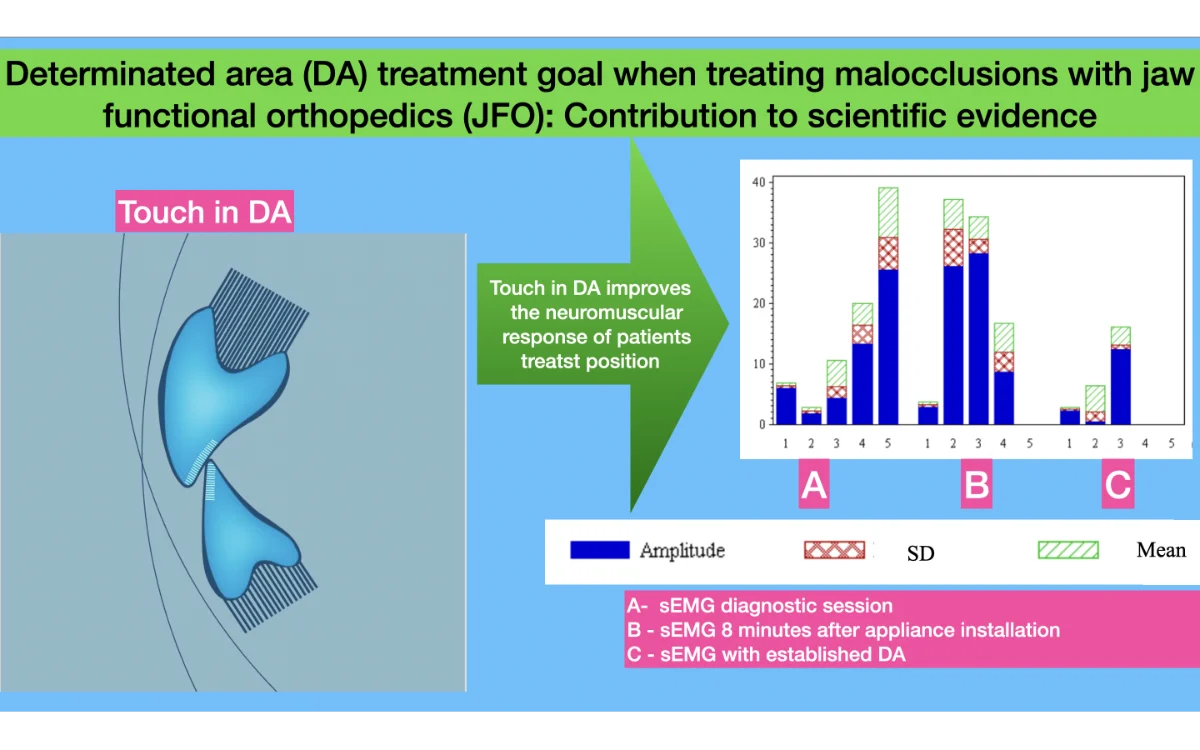
Editor's pick
Research Article
Determinated area (DA) treatment goal when treating malocclusions with jaw functional orthopedics (JFO): Contribution to scientific evidence
By Eduardo Sakai, Luciano Wagner Ribeiro, Orlando Santiago Jr, Sergio Polizio Terçarolli, Jordanna Guedes Amorim
One of the goals of malocclusion treatment with Jaw Functional Orthopedics (JFO) is to obtain touch of the inferior incisors against the superior incisors in Determinate Area (DA). It is postulated that this touch would bring better stimuli and consequently faster results. Surface electromyographic study of the muscles was performed in Masseter, Temporal and suprahyoid muscles bilaterally from 159 patients undergoing malocclusion treatment with functional orthopedic appliances (FOA). To record muscle electric activity were used a conditioning signal module from Lynx Electronics Ltda with 8 channels, model EMG1000; software AqDAnalysis 4,18 from Lynx Electronics Ltda.; Software Lynx BioInspector 1,8r; passive surface electrodes (Ag/AgCl) from Noraxon Dual Electrodes (USA); dischargeable reference electrodes Kendall Meditrace (Ag/AgCl) – Canada. Frequency calibration was 2000 Hz, with 2048 sample by channel and time 1,024 seconds, and filters regulation was 20 Hz and 1000 Hz. The results found prove that there is a better electromyographic activity (bilaterally balanced) of the studied muscles when there is touch on DA. Conclusion. Touch in DA improves the neuromuscular response of patients treated with JFO. sEMG is a trustable tool to analyze masticatory muscles function for Diagnosis, Treatment and evaluation post treatment/gained objective.
May 23, 2024
Orthopedics
Most cited
Research Article
A portable breast cancer detection system based on smartphone with infrared camera
By Jian Ma, Pengchao Shang, Chen Lu, Safa Meraghni, Khaled Benaggoune, Juan Zuluaga, Noureddine Zerhouni, Christine Devalland, Zeina Al Masry
September 26, 2019
Biomechanics
Most cited
Research Article
Three-dimensional reconstruction of medical images based on 3D slicer
By Xiaolin Zhang, Kexin Zhang, Qiuling Pan, Jincai Chang
June 30, 2019
Public Health
Most cited
Research Article
Brain CT image segmentation based on 3D slicer
By Yuxuan Wang, Han Wang, Keqin Shen, Jincai Chang, Jianzhong Cui
June 30, 2020
Public Health
Most cited
Research Article
Modern biophysical view of electromagnetic processes of the phenomenon of life of living biological systems as a promising basis for the development of complex medicine: the role of biophotons
By Ganna Nevoit, Inga Arune Bumblyte, Maksim Potyazhenko, Ozar Minser, Alfonsas Vainoras
June 25, 2023
Public Health
Jaw Functional Orthopedics and Craniofacial Growth
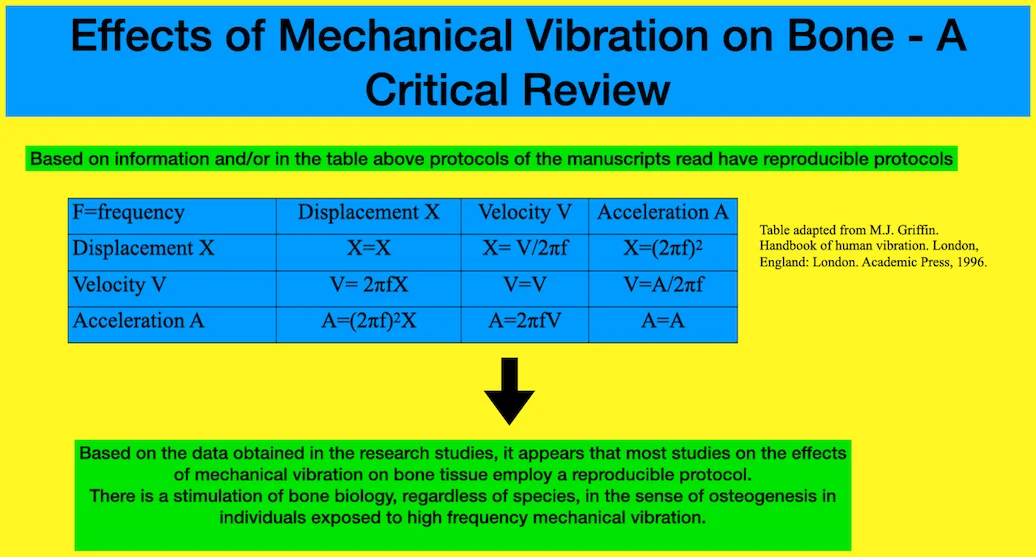
Research Article
Effects of mechanical vibration on bone – a critical review
The benefits of reduced treatment time and comfort for patients undergoing corrective dental treatment with devices gave rise to the creation and modification of long-standing treatment protocols. One of the protocols used for these purposes is mechanical vibration. Objective: This review aimed to study the effects of mechanical vibration on bone. Methods: Portal Capes (periodicos.capes.gov.br) database was searched using the keywords “vibration” and “bone” with no date limit. Based on the title and abstract, the first 50 relevant studies were retrieved. The measured frequencies were between 4 and 150 Hz. Regarding exposure time and the number of applications, the variation is so wide that the average or median would not represent a realistic sample pattern. Results: In the retrieved studies, 41 reported improvements in bone conditions. Research studies show that a reproducible protocol is being applied in most studies on the effects of mechanical vibration on bone tissue. Conclusion: There is stimulation of bone biology, regardless of species, in the sense of osteogenesis in individuals exposed to high frequency mechanical vibration. To improve research protocols on the effects of vibrations on the body, more studies are needed.
November 28, 2022
Orthopedics
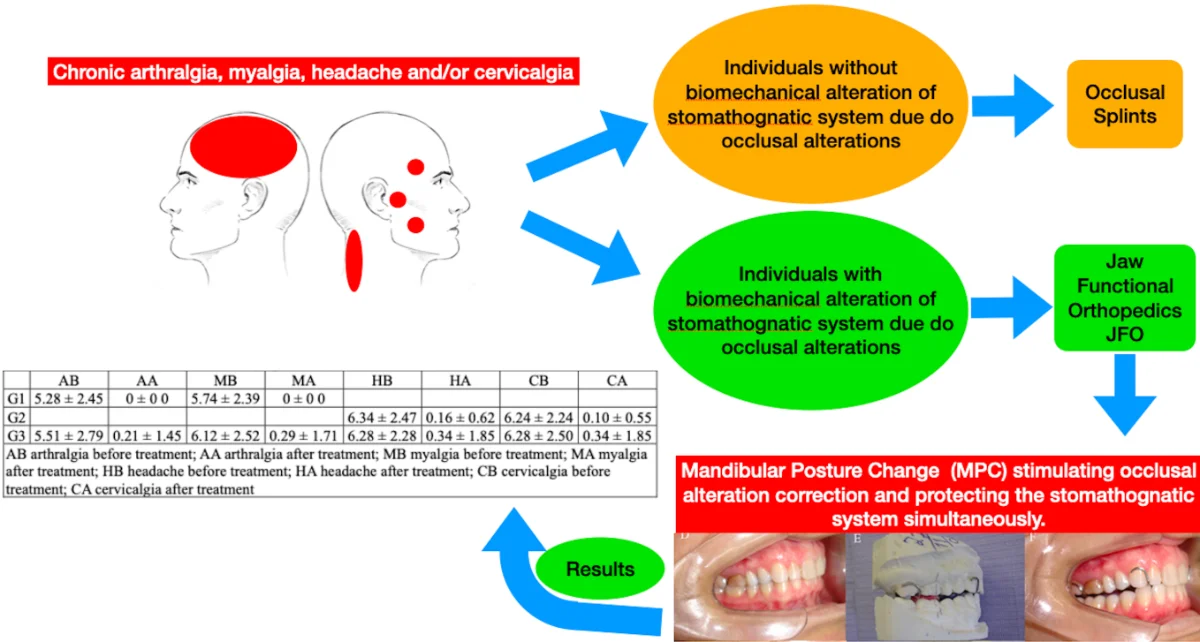
Research Article
Treatment of temporomandibular dysfunction with jaw functional orthopedics: a retrospective study
What are my chances of getting better?” And “How long will it take for the discomfort to improve?” are the two basic questions asked by individuals after they know about the influence of the stomatognathic system (SS) on their discomfort. Despite the biological unpredictability and variation, these individuals need some information. When searching in MEDLINE, some parameters may be found, but there are none about Jaw Functional Orthopedics (JFO). This study sample was composed of 146 patients with TMD and/or headache/neck pains, who were treated with JFO and divided into three groups. Group 1 exclusively with TMD; Group 2 with head and/or neck pain without symptoms of TMD (pain on palpation or movement); and Group 3 with TMD and head/neck pain. The symptoms monitored were arthralgia, and myalgia of the temporal, masseter or suprahyoid muscles, neck pain on movement or palpation, headache and cervicalgia reported. Odontogenic pain and headache originating from other sources (sinusitis, flu, pre-menstrual period, photophobia, hangover, etc.) were excluded from the study. The sample was aligned with the literature relative to prevalence of age and sex. Results showed that JFO treatment was effective in patients of the three groups. There was no statistical difference in mean time for remission among the groups. The results and conclusions should be analyzed with caution since there was no control group, and long term follow up is needed to check the behavior of the symptoms. However, the data from this study suggested that JFO was an efficient tool for treatment of patients with occlusal and biomechanical alterations of the SS, with chronic TMD, head and/or neck pain in a short period of time.
June 21, 2021
Orthopedics
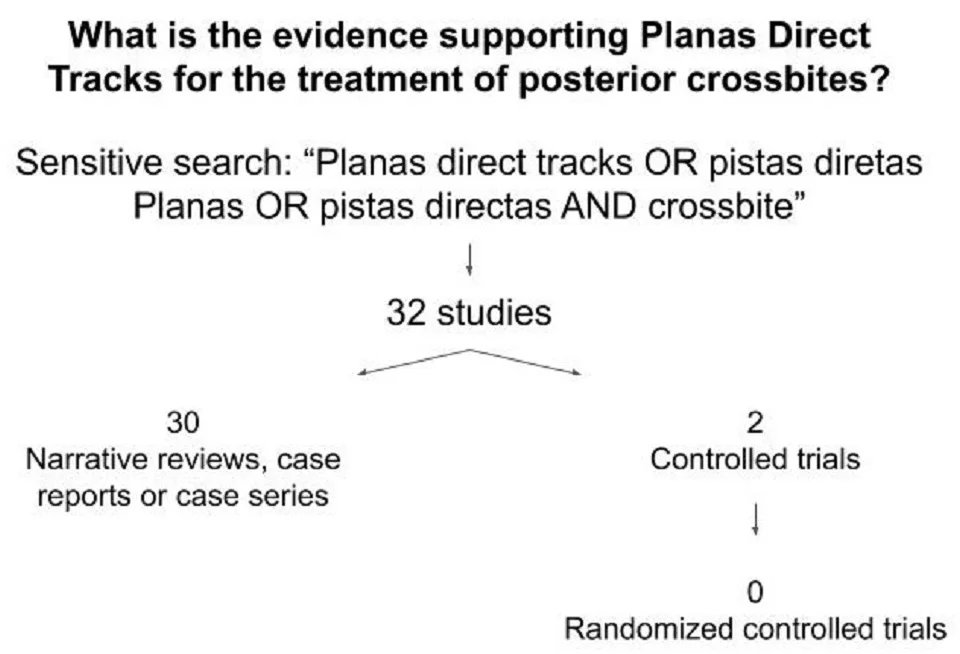
Research Article
Planas direct tracks to treat functional crossbites in children: scientific evidence
Introduction: Posterior functional crossbite is a common malocclusion in children, with a prevalence between 7.5-24 %. It has an important impact on facial functions, and may cause asymmetries in craniofacial development. Different interventions have been used to correct this malocclusion but there is a lack of studies with methodological rigor that support these interventions. Planas Direct Tracks (PDT) constitute one of such interventions. They seek to reestablish the functional occlusal balance of children through selective grinding, complementing this adjustment with composites. Objective: To present the level of scientific evidence available on PDT to correct posterior crossbites. Method: A sensitive search was carried out in the main databases: Pubmed, BVS Odontology, Cochrane, SciElo and Google academic. The articles were selected, duplications removed and critical evaluation of the literature performed classifying the studies according to the evidence pyramid. The aim is to point out ways to improve the quality of the studies. Results: 32 studies were included. 30 studies were narrative reviews, case reports or case series and two were controlled trials. All studies had important biases. No randomized controlled trial was found. Conclusion: So far, there are no studies, sufficiently rigorous methodology, on Planas direct tracks to correct functional crossbites.
November 1, 2022
Orthopedics
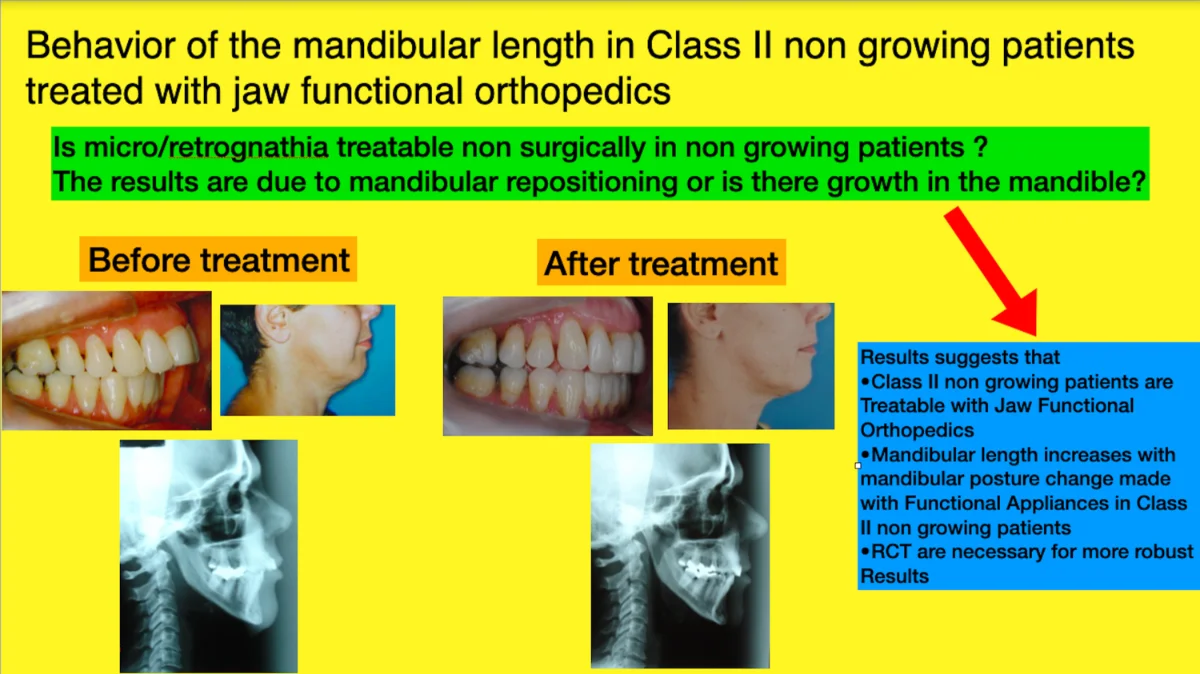
Research Article
Behavior of the mandibular length in class II non-growing patients treated with jaw functional orthopedics
Class II treatment is the leader of seeking for dentofacial correction in offices all around the world due, mainly, to facial esthetics impairment caused by this malocclusion. Mandibular forward repositioned is needed for the majority of this treatment. Jaw Functional Orthopedics (JFO) is a recognized protocol to treat Class II in growing patients. The aim of this investigation is to study the behavior of mandibular length in class II non-growing patients treated with JFO. Distance between Gonion and Mento were measured in lateral teleradiographs at T0 and T1 (from 18 to 21 months of treatment) of non-growing class II patients under treatment with JFO and mandibular supplementary growth was found (P = 0,006). In the sample studied jaw functional orthopedics showed to be efficient to correct the overjet in class II non-growing patients. Mandibular advancement with functional orthopedic appliances promotes a supplementary mandibular growth in non-growing patients. Further studies are necessary for a better comprehension of the subject.
December 27, 2022
Orthopedics
Jaw Functional Orthopedics and Craniofacial Growth
Original scientific articles presenting information that is new and relevant to jaw functional orthopedics
APC
Free of charge
Best of Theme
Most cited
Research article
August 11, 2021
Positioning algorithm for AGV autonomous driving platform based on artificial neural networks
By Patryk Bałazy, Paweł Gut, Paweł Knap
Most cited
Research article
September 26, 2019
Study of CO2 emissions from energy consumption in Spanish hospitals
By Justo García-Sanz-Calcedo
Most cited
Research article
May 15, 2020
Hybrid artificial genetic – neural network model to predict the transmission of vibration to the head during whole-body vibration training
By M. Alshabi, N. Nawayseh, M. Bettayeb
Most cited
Research article
January 22, 2021
Design of low-cost wireless noise monitoring sensor unit based on IoT concept
By Maja Anachkova, Simona Domazetovska, Zlatko Petreski, Viktor Gavriloski
You might also like
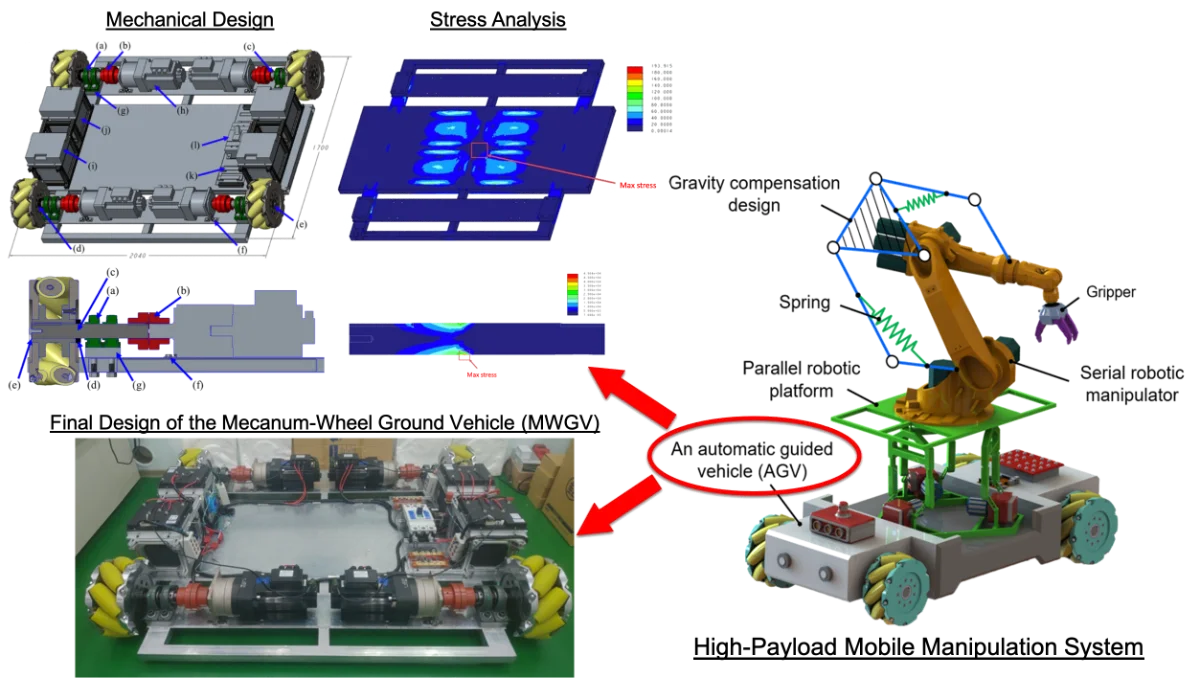
Most downloaded
Research Article
Design of a high-payload Mecanum-wheel ground vehicle (MWGV)
By Zi-Yin Chen, Pei-Ren Liaw, Vu Linh Nguyen, Po Ting Lin
With the rapid developments of Industry 4.0 and Smart Manufacturing, customized manufacturing has been becoming greatly needed. Meanwhile, the challenge of production automation has become more bigger, especially for the automation of moving, picking, placing and manipulating objects. Many researchers have begun to work on Autonomous Ground Vehicles (AGVs). Most AGVs were utilized to carry middle or small objects, as the high-payload AGVs were rarely developed. This paper focused on the design of a High-Payload Mecanum-Wheel Ground Vehicle (MWGV), which was 1.7 m wide and 2.04 m long. The weight of the vehicle was 740 kg and it was able to carry the payload as its own weight (i.e. around 7,300 N). The safety factor of the structural strength was greater than 1.66 and the safety factor of the axial design was at least 6.24. The vehicle was designed to carry 150-kg weight with a reach of 1.375 m without falling. The design of Mecanum wheels provided great flexibility on movement with small rotational radius. Mathematical descriptions about how Mecanum wheels were controlled was also introduced in this paper. Furthermore, the mechatronics and software integrations were demonstrated. The final experimental results showed the developed MWGV was able to perform the desired movement properly.
June 30, 2021
Biomechanics
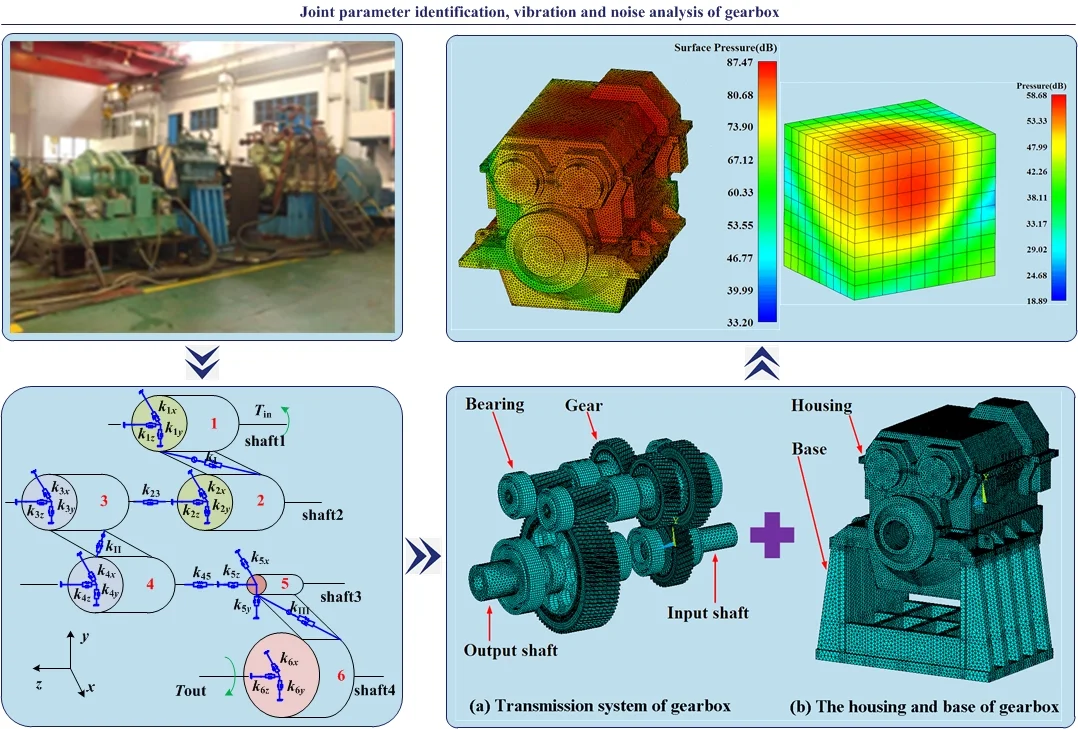
Most downloaded
Research Article
Joint parameter identification, vibration and noise analysis of gearbox
By Tengjiao Lin, Daokun Xie, Quancheng Peng, Songling Guo, Hesheng Lv
A certain type of gearbox is investigated for the problem that the stiffness and damping of bearings are difficult to be accurately determined and then affect the analysis of vibration and noise of gearbox. Firstly, a coupled dynamic lumped parameter model of three-stage helical gear system with consideration of bearing stiffness, bearing damping, and transmission error is established. The modal parameters of gear system are obtained by using the experimental modal analysis method with single-input and multiple-output. The equation for joint parameter identification of gearbox is established which is based on the experimental modal analysis theory and the dynamic lumped parameter model, and subsequently the parameters of the joint are obtained by the least square method. Then, a gear-shaft-bearing- housing coupled dynamic finite element model is developed on the basis of the identified parameters, and after that the dynamic response results of gearbox are solved by using the modal superposition method and compared with the vibration test results. Finally, an acoustic boundary element model of gearbox is established by taking the dynamic response results as the acoustic boundary condition, and the surface sound pressure and radiation noise of gearbox are solved by the boundary element method (BEM), and then the results are compared with the noise test. The results show that the simulation laws and test laws are in good agreement, and thus the method of joint parameter identification, vibration and noise analysis of gearbox is feasible.
May 15, 2019
Public Health
Experimental and finite element approach for finding sound absorption coefficient of bio-based foam
The enormous consumption of Polyurethane foam leads to severe environmental pollution and health hazards, so it is necessary to overcome this problem. This paper presents alternative and less hazardous foam that differs from traditional foams. A bio-based foam was developed either by using castor oil-based polyol or natural fibers as fillers. In the present study, rigid foam is synthesized by both castor polyol and luffa fiber, whereas for flexible foam, only luffa fiber is incorporated. Luffa fillers enhance the porosity of Polyurethane foam, which is the dominating factor influencing the value of the sound absorption coefficient. Both rigid and flexible foams were developed with 5, 10 and 15 percentages of filler loaded. The samples are tested experimentally using the two-microphone impedance tube method and the measured result was compared with the numerical result, which is predicted from COMSOL Multiphysics. The experimental results of flexible foam demonstrate good agreement with numerical results. The results indicate that the addition of Luffa fibers enhances the sound absorption performance of flexible foam and deterioration in the rigid foam because of the high viscosity of castor oil polyol.
Effect of heat transfer optimization on brake noise characteristics of automotive disc brake
Heat effect is one of the most important factors affecting the brake noise level. The finite element model for transient heat transfer analysis of disc brake is established based on heat transfer control equation and heat dissipation boundary conditions of dynamic convection. According to the NVH test and modal calculation, the brake noise characteristics are tested and analyzed. Meanwhile, the heat transfer simulation is verified and shows high accuracy. The discrete data for the response surface function are obtained by the Central Composite Design method with the peak temperature and mass as the target variables. The error of regression function is judged by fitting decision coefficient, correcting decision coefficient and root mean square error. By the optimizing mathematical model, the brake disc temperature peak can be greatly reduced and the heat transfer ability is obviously optimized without mass increasing, the time with temperature above 120 °C can be reduced by 46 %. Through the comparison of brake noise level before and after optimization, it can be known that the noise level can be significantly decreased after structural optimization, except the first order resonance frequency. The optimization result has good social and economic value.